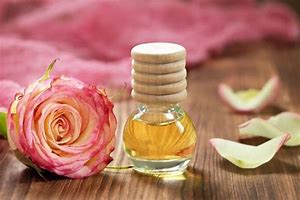










CANANGA
Cananga odorata
FAMILY Annonaceae
SYNONYMS C.odoratum var. macrophylla
GENERAL DESCRIPTION
A tall tropical tree, up to 30metres high, which flowers all year round. It bears large, fragrant, tender yellow flowers which are virtually identical to those of Ylang Ylang.
DISTRIBUTION
Native to tropical Asia: Java, Malaysia, the Philippines, the Moluccas.
OTHER SPECIES
Very closely related to the tree which produces Ylang Ylang oil, C.odorata var.genuina. Cananga is considered an inferior produce in perfumery work; being grown in different regions the oil has a different quality, heavier and less delicate than ylang ylang. However, cananga is truly a'complete' oil whereas ylang ylang is made into several distillates.
HERBAL/FOLK TRADITION
Used locally for infectious illnesses, for example malaria. The beautiful flowers are also used for decorative purposes at festivals.
ACTIONS
Antiseptic, antidepressant, aphrodisiac, hypotensive, nervine, sedative, tonic.
EXTRACTION
Essential oils by water distillation from the flowers.
CHARACTERISTICS
Greenish-yellow or orange viscous liquid with a sweet, floral balsamic tenacious scent. It blends well with calmaus, birch tar, copaiba balsam, labdanum, neroli, oakmoss, jasmine, guaiacwood and oriental type bases.
PRINCIPAL CONSTITUENTS
Caryophyllene, benzyl acetate, benzyl alcohol, farnesol, terpineol, borneol, geranyl acetate, safrol, linalol, limonrne,methyl salicylate and over 100 minor components.
SAFETY DATA
Non-toxic, non -irritant, possible sensitization especially in those with sensitive skin.
AROMATHERAPY/HOME USE
Skin care: Insect bites, fragrance, general skin care.
Nervous system: Anxiety, depression, nervous tension and stress-related complaints.
OTHER USES
Fragrant component in soaps, detergents, cosmetics and perfumes, especially men's fragrances. Limited use as a flavour ingredient in some food products, alcoholic and soft drinks.
Reference: The Encyclopedia of Essential oils: Julia Lawless
Articles Latest
- Chamomile Roman - Chamaemelum nobile
- Chamomile Maroc - Ormenis multicaulis
- Chamomile German - Matricaria recutica
- From Biology To Aromatherapy
- Plant Messengers
- Celery Seed-Apium graveolens
- Cedarwood Virginian - Juniperus virginiana
- Cedarwood, Texas- Juniperus ashei - Essential oils
- Cedarwood Atlas- Cedrus atlantica - Essential Oils
- Cassie - Acacia Farnesiana - sweet acacia
- Cassia - Cinnamomum Cassia
- Cascarilla Bark - Croton eluteria
- Carrot Seed- Dacus Carota
- CARDAMON
- CARAWAY
- CANANGA
- CAMPHOR
- CALAMUS
- Calamintha-Calamintha officinalis
- CAJEPUT- Melaleuca cajeputi
- Plant Expression
Articles-Most Read
- Home
- Balsam Canadian - Abies balsamea
- Balsam Peru
- Copaiba Essential Oil
- North America: Tea Tree and Monarda-3
- Basil French - Ocimum basilicum
- Basil Exotic
- North America: Tea Tree and Monarda-2
- Exploring Transcultural Constants
- Thyme Essential Oil
- Balsam Tolu
- Palma Rosa
- The Bioactivity of Essential Oils
- Bay - West Indian - Pimenta racemosa
- Benzoin - Styrax benzoin
- Why Pharmacology Cannot Demonstrate Essential Oil Efficacy
- Exploring Essential Oil Activity The Conventional Way
- Complex information From Plants
- Aromatherapy: An Answer
- Contacts
